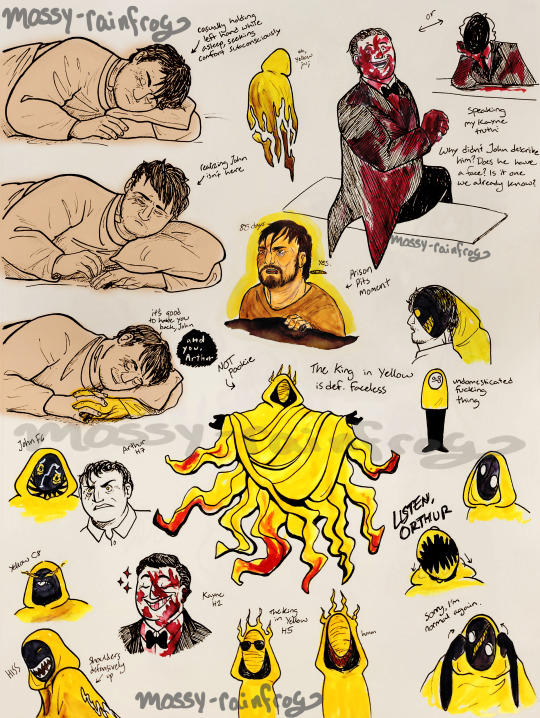#access private
Explore tagged Tumblr posts
Text
Autoenshittification

Forget F1: the only car race that matters now is the race to turn your car into a digital extraction machine, a high-speed inkjet printer on wheels, stealing your private data as it picks your pocket. Your car’s digital infrastructure is a costly, dangerous nightmare — but for automakers in pursuit of postcapitalist utopia, it’s a dream they can’t give up on.
Your car is stuffed full of microchips, a fact the world came to appreciate after the pandemic struck and auto production ground to a halt due to chip shortages. Of course, that wasn’t the whole story: when the pandemic started, the automakers panicked and canceled their chip orders, only to immediately regret that decision and place new orders.
But it was too late: semiconductor production had taken a serious body-blow, and when Big Car placed its new chip orders, it went to the back of a long, slow-moving line. It was a catastrophic bungle: microchips are so integral to car production that a car is basically a computer network on wheels that you stick your fragile human body into and pray.
The car manufacturers got so desperate for chips that they started buying up washing machines for the microchips in them, extracting the chips and discarding the washing machines like some absurdo-dystopian cyberpunk walnut-shelling machine:
https://www.autoevolution.com/news/desperate-times-companies-buy-washing-machines-just-to-rip-out-the-chips-187033.html
These digital systems are a huge problem for the car companies. They are the underlying cause of a precipitous decline in car quality. From touch-based digital door-locks to networked sensors and cameras, every digital system in your car is a source of endless repair nightmares, costly recalls and cybersecurity vulnerabilities:
https://www.reuters.com/business/autos-transportation/quality-new-vehicles-us-declining-more-tech-use-study-shows-2023-06-22/
What’s more, drivers hate all the digital bullshit, from the janky touchscreens to the shitty, wildly insecure apps. Digital systems are drivers’ most significant point of dissatisfaction with the automakers’ products:
https://www.theverge.com/23801545/car-infotainment-customer-satisifaction-survey-jd-power
Even the automakers sorta-kinda admit that this is a problem. Back in 2020 when Massachusetts was having a Right-to-Repair ballot initiative, Big Car ran these unfuckingbelievable scare ads that basically said, “Your car spies on you so comprehensively that giving anyone else access to its systems will let murderers stalk you to your home and kill you:
https://pluralistic.net/2020/09/03/rip-david-graeber/#rolling-surveillance-platforms
But even amid all the complaining about cars getting stuck in the Internet of Shit, there’s still not much discussion of why the car-makers are making their products less attractive, less reliable, less safe, and less resilient by stuffing them full of microchips. Are car execs just the latest generation of rubes who’ve been suckered by Silicon Valley bullshit and convinced that apps are a magic path to profitability?
Nope. Car execs are sophisticated businesspeople, and they’re surfing capitalism’s latest — and last — hot trend: dismantling capitalism itself.
Now, leftists have been predicting the death of capitalism since The Communist Manifesto, but even Marx and Engels warned us not to get too frisky: capitalism, they wrote, is endlessly creative, constantly reinventing itself, re-emerging from each crisis in a new form that is perfectly adapted to the post-crisis reality:
https://www.nytimes.com/2022/10/31/books/review/a-spectre-haunting-china-mieville.html
But capitalism has finally run out of gas. In his forthcoming book, Techno Feudalism: What Killed Capitalism, Yanis Varoufakis proposes that capitalism has died — but it wasn’t replaced by socialism. Rather, capitalism has given way to feudalism:
https://www.penguin.co.uk/books/451795/technofeudalism-by-varoufakis-yanis/9781847927279
Under capitalism, capital is the prime mover. The people who own and mobilize capital — the capitalists — organize the economy and take the lion’s share of its returns. But it wasn’t always this way: for hundreds of years, European civilization was dominated by rents, not markets.
A “rent” is income that you get from owning something that other people need to produce value. Think of renting out a house you own: not only do you get paid when someone pays you to live there, you also get the benefit of rising property values, which are the result of the work that all the other homeowners, business owners, and residents do to make the neighborhood more valuable.
The first capitalists hated rent. They wanted to replace the “passive income” that landowners got from taxing their serfs’ harvest with active income from enclosing those lands and grazing sheep in order to get wool to feed to the new textile mills. They wanted active income — and lots of it.
Capitalist philosophers railed against rent. The “free market” of Adam Smith wasn’t a market that was free from regulation — it was a market free from rents. The reason Smith railed against monopolists is because he (correctly) understood that once a monopoly emerged, it would become a chokepoint through which a rentier could cream off the profits he considered the capitalist’s due:
https://locusmag.com/2021/03/cory-doctorow-free-markets/
Today, we live in a rentier’s paradise. People don’t aspire to create value — they aspire to capture it. In Survival of the Richest, Doug Rushkoff calls this “going meta”: don’t provide a service, just figure out a way to interpose yourself between the provider and the customer:
https://pluralistic.net/2022/09/13/collapse-porn/#collapse-porn
Don’t drive a cab, create Uber and extract value from every driver and rider. Better still: don’t found Uber, invest in Uber options and extract value from the people who invest in Uber. Even better, invest in derivatives of Uber options and extract value from people extracting value from people investing in Uber, who extract value from drivers and riders. Go meta.
This is your brain on the four-hour-work-week, passive income mind-virus. In Techno Feudalism, Varoufakis deftly describes how the new “Cloud Capital” has created a new generation of rentiers, and how they have become the richest, most powerful people in human history.
Shopping at Amazon is like visiting a bustling city center full of stores — but each of those stores’ owners has to pay the majority of every sale to a feudal landlord, Emperor Jeff Bezos, who also decides which goods they can sell and where they must appear on the shelves. Amazon is full of capitalists, but it is not a capitalist enterprise. It’s a feudal one:
https://pluralistic.net/2022/11/28/enshittification/#relentless-payola
This is the reason that automakers are willing to enshittify their products so comprehensively: they were one of the first industries to decouple rents from profits. Recall that the reason that Big Car needed billions in bailouts in 2008 is that they’d reinvented themselves as loan-sharks who incidentally made cars, lending money to car-buyers and then “securitizing” the loans so they could be traded in the capital markets.
Even though this strategy brought the car companies to the brink of ruin, it paid off in the long run. The car makers got billions in public money, paid their execs massive bonuses, gave billions to shareholders in buybacks and dividends, smashed their unions, fucked their pensioned workers, and shipped jobs anywhere they could pollute and murder their workforce with impunity.
Car companies are on the forefront of postcapitalism, and they understand that digital is the key to rent-extraction. Remember when BMW announced that it was going to rent you the seatwarmer in your own fucking car?
https://pluralistic.net/2020/07/02/big-river/#beemers
Not to be outdone, Mercedes announced that they were going to rent you your car’s accelerator pedal, charging an extra $1200/year to unlock a fully functional acceleration curve:
https://www.theverge.com/2022/11/23/23474969/mercedes-car-subscription-faster-acceleration-feature-price
This is the urinary tract infection business model: without digitization, all your car’s value flowed in a healthy stream. But once the car-makers add semiconductors, each one of those features comes out in a painful, burning dribble, with every button on that fakakta touchscreen wired directly into your credit-card.
But it’s just for starters. Computers are malleable. The only computer we know how to make is the Turing Complete Von Neumann Machine, which can run every program we know how to write. Once they add networked computers to your car, the Car Lords can endlessly twiddle the knobs on the back end, finding new ways to extract value from you:
https://doctorow.medium.com/twiddler-1b5c9690cce6
That means that your car can track your every movement, and sell your location data to anyone and everyone, from marketers to bounty-hunters looking to collect fees for tracking down people who travel out of state for abortions to cops to foreign spies:
https://www.vice.com/en/article/n7enex/tool-shows-if-car-selling-data-privacy4cars-vehicle-privacy-report
Digitization supercharges financialization. It lets car-makers offer subprime auto-loans to desperate, poor people and then killswitch their cars if they miss a payment:
https://www.youtube.com/watch?v=4U2eDJnwz_s
Subprime lending for cars would be a terrible business without computers, but digitization makes it a great source of feudal rents. Car dealers can originate loans to people with teaser rates that quickly blow up into payments the dealer knows their customer can’t afford. Then they repo the car and sell it to another desperate person, and another, and another:
https://pluralistic.net/2022/07/27/boricua/#looking-for-the-joke-with-a-microscope
Digitization also opens up more exotic options. Some subprime cars have secondary control systems wired into their entertainment system: miss a payment and your car radio flips to full volume and bellows an unstoppable, unmutable stream of threats. Tesla does one better: your car will lock and immobilize itself, then blare its horn and back out of its parking spot when the repo man arrives:
https://tiremeetsroad.com/2021/03/18/tesla-allegedly-remotely-unlocks-model-3-owners-car-uses-smart-summon-to-help-repo-agent/
Digital feudalism hasn’t stopped innovating — it’s just stopped innovating good things. The digital device is an endless source of sadistic novelties, like the cellphones that disable your most-used app the first day you’re late on a payment, then work their way down the other apps you rely on for every day you’re late:
https://restofworld.org/2021/loans-that-hijack-your-phone-are-coming-to-india/
Usurers have always relied on this kind of imaginative intimidation. The loan-shark’s arm-breaker knows you’re never going to get off the hook; his goal is in intimidating you into paying his boss first, liquidating your house and your kid’s college fund and your wedding ring before you default and he throws you off a building.
Thanks to the malleability of computerized systems, digital arm-breakers have an endless array of options they can deploy to motivate you into paying them first, no matter what it costs you:
https://pluralistic.net/2021/04/02/innovation-unlocks-markets/#digital-arm-breakers
Car-makers are trailblazers in imaginative rent-extraction. Take VIN-locking: this is the practice of adding cheap microchips to engine components that communicate with the car’s overall network. After a new part is installed in your car, your car’s computer does a complex cryptographic handshake with the part that requires an unlock code provided by an authorized technician. If the code isn’t entered, the car refuses to use that part.
VIN-locking has exploded in popularity. It’s in your iPhone, preventing you from using refurb or third-party replacement parts:
https://doctorow.medium.com/apples-cement-overshoes-329856288d13
It’s in fuckin’ ventilators, which was a nightmare during lockdown as hospital techs nursed their precious ventilators along by swapping parts from dead systems into serviceable ones:
https://www.vice.com/en/article/3azv9b/why-repair-techs-are-hacking-ventilators-with-diy-dongles-from-poland
And of course, it’s in tractors, along with other forms of remote killswitch. Remember that feelgood story about John Deere bricking the looted Ukrainian tractors whose snitch-chips showed they’d been relocated to Russia?
https://doctorow.medium.com/about-those-kill-switched-ukrainian-tractors-bc93f471b9c8
That wasn’t a happy story — it was a cautionary tale. After all, John Deere now controls the majority of the world’s agricultural future, and they’ve boobytrapped those ubiquitous tractors with killswitches that can be activated by anyone who hacks, takes over, or suborns Deere or its dealerships.
Control over repair isn’t limited to gouging customers on parts and service. When a company gets to decide whether your device can be fixed, it can fuck you over in all kinds of ways. Back in 2019, Tim Apple told his shareholders to expect lower revenues because people were opting to fix their phones rather than replace them:
https://www.apple.com/newsroom/2019/01/letter-from-tim-cook-to-apple-investors/
By usurping your right to decide who fixes your phone, Apple gets to decide whether you can fix it, or whether you must replace it. Problem solved — and not just for Apple, but for car makers, tractor makers, ventilator makers and more. Apple leads on this, even ahead of Big Car, pioneering a “recycling” program that sees trade-in phones shredded so they can’t possibly be diverted from an e-waste dump and mined for parts:
https://www.vice.com/en/article/yp73jw/apple-recycling-iphones-macbooks
John Deere isn’t sleeping on this. They’ve come up with a valuable treasure they extract when they win the Right-to-Repair: Deere singles out farmers who complain about its policies and refuses to repair their tractors, stranding them with six-figure, two-ton paperweight:
https://pluralistic.net/2022/05/31/dealers-choice/#be-a-shame-if-something-were-to-happen-to-it
The repair wars are just a skirmish in a vast, invisible fight that’s been waged for decades: the War On General-Purpose Computing, where tech companies use the law to make it illegal for you to reconfigure your devices so they serve you, rather than their shareholders:
https://memex.craphound.com/2012/01/10/lockdown-the-coming-war-on-general-purpose-computing/
The force behind this army is vast and grows larger every day. General purpose computers are antithetical to technofeudalism — all the rents extracted by technofeudalists would go away if others (tinkereres, co-ops, even capitalists!) were allowed to reconfigure our devices so they serve us.
You’ve probably noticed the skirmishes with inkjet printer makers, who can only force you to buy their ink at 20,000% markups if they can stop you from deciding how your printer is configured:
https://pluralistic.net/2022/08/07/inky-wretches/#epson-salty But we’re also fighting against insulin pump makers, who want to turn people with diabetes into walking inkjet printers:
https://pluralistic.net/2022/06/10/loopers/#hp-ification
And companies that make powered wheelchairs:
https://pluralistic.net/2022/06/08/chair-ish/#r2r
These companies start with people who have the least agency and social power and wreck their lives, then work their way up the privilege gradient, coming for everyone else. It’s called the “shitty technology adoption curve”:
https://pluralistic.net/2022/08/21/great-taylors-ghost/#solidarity-or-bust
Technofeudalism is the public-private-partnership from hell, emerging from a combination of state and private action. On the one hand, bailing out bankers and big business (rather than workers) after the 2008 crash and the covid lockdown decoupled income from profits. Companies spent billions more than they earned were still wildly profitable, thanks to those public funds.
But there’s also a policy dimension here. Some of those rentiers’ billions were mobilized to both deconstruct antitrust law (allowing bigger and bigger companies and cartels) and to expand “IP” law, turning “IP” into a toolsuite for controlling the conduct of a firm’s competitors, critics and customers:
https://locusmag.com/2020/09/cory-doctorow-ip/
IP is key to understanding the rise of technofeudalism. The same malleability that allows companies to “twiddle” the knobs on their services and keep us on the hook as they reel us in would hypothetically allow us to countertwiddle, seizing the means of computation:
https://pluralistic.net/2023/04/12/algorithmic-wage-discrimination/#fishers-of-men
The thing that stands between you and an alternative app store, an interoperable social media network that you can escape to while continuing to message the friends you left behind, or a car that anyone can fix or unlock features for is IP, not technology. Under capitalism, that technology would already exist, because capitalists have no loyalty to one another and view each other’s margins as their own opportunities.
But under technofeudalism, control comes from rents (owning things), not profits (selling things). The capitalist who wants to participate in your iPhone’s “ecosystem” has to make apps and submit them to Apple, along with 30% of their lifetime revenues — they don’t get to sell you jailbreaking kit that lets you choose their app store.
Rent-seeking technology has a holy grail: control over “ring zero” — the ability to compel you to configure your computer to a feudalist’s specifications, and to verify that you haven’t altered your computer after it came into your possession:
https://pluralistic.net/2022/01/30/ring-minus-one/#drm-political-economy
For more than two decades, various would-be feudal lords and their court sorcerers have been pitching ways of doing this, of varying degrees of outlandishness.
At core, here’s what they envision: inside your computer, they will nest another computer, one that is designed to run a very simple set of programs, none of which can be altered once it leaves the factory. This computer — either a whole separate chip called a “Trusted Platform Module” or a region of your main processor called a secure enclave — can tally observations about your computer: which operating system, modules and programs it’s running.
Then it can cryptographically “sign” these observations, proving that they were made by a secure chip and not by something you could have modified. Then you can send this signed “attestation” to someone else, who can use it to determine how your computer is configured and thus whether to trust it. This is called “remote attestation.”
There are some cool things you can do with remote attestation: for example, two strangers playing a networked video game together can use attestations to make sure neither is running any cheat modules. Or you could require your cloud computing provider to use attestations that they aren’t stealing your data from the server you’re renting. Or if you suspect that your computer has been infected with malware, you can connect to someone else and send them an attestation that they can use to figure out whether you should trust it.
Today, there’s a cool remote attestation technology called “PrivacyPass” that replaces CAPTCHAs by having you prove to your own device that you are a human. When a server wants to make sure you’re a person, it sends a random number to your device, which signs that number along with its promise that it is acting on behalf of a human being, and sends it back. CAPTCHAs are all kinds of bad — bad for accessibility and privacy — and this is really great.
But the billions that have been thrown at remote attestation over the decades is only incidentally about solving CAPTCHAs or verifying your cloud server. The holy grail here is being able to make sure that you’re not running an ad-blocker. It’s being able to remotely verify that you haven’t disabled the bossware your employer requires. It’s the power to block someone from opening an Office365 doc with LibreOffice. It’s your boss’s ability to ensure that you haven’t modified your messaging client to disable disappearing messages before he sends you an auto-destructing memo ordering you to break the law.
And there’s a new remote attestation technology making the rounds: Google’s Web Environment Integrity, which will leverage Google’s dominance over browsers to allow websites to block users who run ad-blockers:
https://github.com/RupertBenWiser/Web-Environment-Integrity
There’s plenty else WEI can do (it would make detecting ad-fraud much easier), but for every legitimate use, there are a hundred ways this could be abused. It’s a technology purpose-built to allow rent extraction by stripping us of our right to technological self-determination.
Releasing a technology like this into a world where companies are willing to make their products less reliable, less attractive, less safe and less resilient in pursuit of rents is incredibly reckless and shortsighted. You want unauthorized bread? This is how you get Unauthorized Bread:
https://arstechnica.com/gaming/2020/01/unauthorized-bread-a-near-future-tale-of-refugees-and-sinister-iot-appliances/amp/

If you'd like an essay-formatted version of this thread to read or share, here's a link to it on pluralistic.net, my surveillance-free, ad-free, tracker-free blog:
https://pluralistic.net/2023/07/24/rent-to-pwn/#kitt-is-a-demon

[Image ID: The interior of a luxury car. There is a dagger protruding from the steering wheel. The entertainment console has been replaced by the text 'You wouldn't download a car,' in MPAA scare-ad font. Outside of the windscreen looms the Matrix waterfall effect. Visible in the rear- and side-view mirror is the driver: the figure from Munch's 'Scream.' The screen behind the steering-wheel has been replaced by the menacing red eye of HAL9000 from Stanley Kubrick's '2001: A Space Odyssey.']

Image: Cryteria (modified) https://commons.wikimedia.org/wiki/File:HAL9000.svg
CC BY 3.0 https://creativecommons.org/licenses/by/3.0/deed.en
#pluralistic#shitty technology adoption curve#unauthorized bread#automotive#arm-breakers#cars#big car#right to repair#rent-seeking#digital feudalism#neofeudalism#drm#wei#remote attestation#private access tokens#yannis varoufakis#web environment integrity#paternalism#war on general purpose computing#competitive compatibility#google#enshittification#interoperability#adversarial interoperability#comcom#the internet con#postcapitalism#ring zero#care#med-tech
4K notes
·
View notes
Text




yeri ⟡
'one of these nights' 20160319
#I wanna travel soooooooo bad -- im fortunate enough to be able to make plans in november but ahh I can't wait!! I really wanna document it#but im not sure how.. I was thinking to make a private tumblr and maybe give a few of my friends access to it.. I would post on insta#but eh got a few people I would rather not share my happy times with yk.. actually so traumatised from insta.. but wah wah 🗣️🗣️#yeri#kim yerim#red velvet#ggnet#idolady#usersunny#ninqztual#userdahyun#ultkpopnetwork#userdoyeons#rvedit#redvelvetinc#kpopccc#dailyrv#heyteo#forvy#danablr#femadolsedit#femaleidol#kpopggedit#niniblr#smsource#caprisee#analook#useranusia#usercherry
571 notes
·
View notes
Text
This is Eddie Munson:

This is Joseph Quinn:

This is Eddie Munson:

This is Joseph Quinn:

This is Eddie Munson:

This is Joseph Quinn:

This is Eddie Munson:

This is Joseph Quinn:

This is Eddie Munson:

This is Joseph Quinn:

If at any point you were unable to distinguish the difference between the actor and the character they portrayed in a fictional tv show, I would like to congratulate you on being the actual problematic one and not the actor. Joseph is not Eddie Munson IRL. It's sad that I actually had to type that. Stop complaining and whining about things that aren't actually problematic and don't affect you or your existence. If your feelings are hurt or you feel "betrayed" I'm embarrassed for you. Grow up. Thanks for coming to my Ted talk.
#joseph quinn#joe quinn#jq#eddie munson#stranger things#stranger things 4#no really its embarrassing#the commentary on a persons private life is so lame#you dont know the man#you#do#not#know#the#man#interviews are not a full access into a persons life#parasocial relationships are creepy#i am not accepting any arguments on the matter#my mind can not and will not be changed on the matter#talk about this in therapy
169 notes
·
View notes
Text
Every time he discovers a new kink

#do you think airachnid teaches him new kinks#or does he find them on his own like a youngling with unrestricted datanet access#either way he always makes this face until he decides how he feels about it#transformers#tf one#transformers one#sentinel prime#tf one sentinel prime#sentinel prime after dark#sentinel primes private library#valveplug
91 notes
·
View notes
Text



[ID: Several drawings of Arthur Lester and John Doe from Malevolent kissing with their shared hand, and a picture of John and Yellow's designs. Arthur is portrayed as a midsized white man with short, disheveled brown hair that is hanging partially over his face. John is portrayed as a humanoid monstrous figure with a cracked pallid mask for part of his face, as well as three small black horns on the side of the mask. The mask is broken diagonally, and beneath it, there is a large diagonal maw of sharp teeth against pitch-black skin. He wears a golden-yellow hooded robe.
In the first drawing, Arthur stands, head cocked gently to the side as John uses their shared hand to hold Arthur's chin and press his thumb against Arthur's lips. Arthur holds the elbow of the arm with his other hand. On the other side of the hand, John leans in to press his teeth to the back of his own hand, as if they were touching mouths. The folds of John's cloak are translucent over the arm they share. In the second drawing, John has tipped Arthur's head back further, and is pressing against him harder. Arthur's mouth is open, as is John's, revealing more sharp teeth. Arthur pulls the hand closer by the wrist.
The final drawing shows John's design as a full body, alongside a design of Yellow. In this one, John's hand is his own, and he holds it to his chest. The base of his robe separates into tentacle-like strips of fabric. Yellow is a similarly humanoid figure with a yellow hood, but his mask is the opposite side of John's, diagonally split just the same. Beneath Yellow's mask, we see a burning yellow eye, and his mouth under the chin of the mask, open in a snarl. Yellow is smaller than John, the end of his cloak appears to have been torn apart. End ID]
so I got hit with a beam of divine genius last night. all i can say is Would😳😳😳
#i heart moments between (or during!) divorce#malevolent#malevolent podcast#malevolent art#arthur lester#arthur lester malevolent#malevolent john doe#john doe malevolent#private eyes#privateeyes#jarthur#malevolent arthur#yellow malevolent#accessible art#described#mossy art#holy shit i did all of these in like. probably under 7 hrs. new record lol#john doe#masked
114 notes
·
View notes
Text
Does Eddie Munson have experience? I don’t know. Probably but I personally don’t think he does, at least not nearly to the extent I often see people theorizing. But then again, maybe that’s just to appease my absolute adoration for touch-starved boyos who can potentially cum in their pants from a good make out session with the person they’re head-over-heels for.
#eddie munson x reader#Eddie Munson#stranger things x reader#I can’t say I want that twink obliterated#because they did indeed obliterate that twink#but what I CAN say is that I want that twink humiliated#but in a private and cozy setting where he is otherwise safe#and has access to a change of clothing
26 notes
·
View notes
Text
Antis whenever people in fandom donate to a fandom archive:

#why y'all surprised. why is ao3 not worth donating to.#do y'all freak out when people donate to libraries because they have books like lolita.#even with the whole 'you should have other priorities' like. um. the fallacy of relative privation is a thing.#and also having open access to uncensored fanworks is super Important Actually.#ao3#fandom#antis#purity culture#fanfiction#proship#i guess.
43 notes
·
View notes
Text















SIMS 4 OC BUILDS: Saitama Loft
Finally got my builds sorted and photographed! First up is my first build, Ms Enatsu’s apartment with her boyf Katsuki! The ‘house’ is what their flat would look like in an apartment building but I’ve made it more livable in the sims lmao.
Lookbooks: Ackermans || Rikihisas || Enatsu || Kyutoku || Olalias || Hatakes || ATLA || Ginnivan || Ishimoto
Tag list (ask to be added or removed): @carrionsflower @statichvm @risingsh0t @simonxriley @tommyarashikage @kanos @bbrocklesnar @confidentandgood @unholymilf @florbelles @thedeadthree @shellibisshe @roofgeese @aezyrraeshh @faerune @tekehu @jackiesarch @minaharkers @sergeiravenov @carlosoliveiraa @rosenfey @greenecreek @queennymeria @heroofpenamstan @alexxmason @tethrras @jamessunderlandgf @a-treides @solasan @bigbywlf @delzinrowe @fenharel @imogenkol
#jess plays the sims#oc: asami enatsu#otp: boom boom pow#sims 4#the sims#sims 4 build#sims 4 screenshots#my builds#here’s the first of my builds that I’ve made!!#I still adore how their apartment looks tbh#imagine this in a big building in the middle of a city#and they have private access to the roof#just a cute place for the 2 of them to hang out after a lot of hero hard work#also if you peep similar cc in future posts… no you didn’t#I don’t wanna overload my game/pc with mods so I use what I have#may spice it up at some point but for now I like what I like#so that’s what I use!#anyway I hope you likkkkeeee#still improving my screenshotting skills
32 notes
·
View notes
Text
Vox has the ability to levitate/fly, but he hasn't used that power in seven years and doesn't even remember that he has it.
The day at the hotel when he rediscovers that's something he can actually do is... absolute chaos.
Vox and Niffty are having fun– having the time of their lives– but no one else is. Husk gets dragged into this mess because he's the only other resident who can fly and Alastor doesn't feel like being helpful that day.
#husk confronting vox and niffty in private on the roof what will he do#vox (ram)#niffty (ram)#randomly accessed memories#light
55 notes
·
View notes
Text
Eichi's revolution succeeding while tatsumi's failed... rainbow capitalism 1 christian communism 0
#still thinking about that post from this morning about rainbow capitalist eichi#goes well with that line in primavera about making valentines day accessible for all#...thankss. in the story about shortage of cocoa due to war...#man that storys such a blur in my head i remember the himemiya private military was involved
24 notes
·
View notes
Note
Vasco and Machete are absolutely adorable, your style is so lovely and you draw the softest beds I’ve ever seen in any art ever
.
#thank you!#softest beds is a whole new compliment that's so sweet#let me go off on a weird and personal tangent for a minute#I've always found the concept of sleeping very touching somehow#it's this mandatory resting period literally everyone has to plan their life around no one has the power to avoid sleeping#if you neglect it your mind and body start to break down very quickly#sleep is such a neutral state of being no one is particularly sad or happy or evil or good while they're asleep they're just logged off#sleeping feels nice it's rejuvenating it's one of the few universal pleasures every single person has an access to#and I find it terribly cute how people have different little bedtime rituals#socks on socks off various pillow and blanket arrangements certain sounds that make them sleepy etc#and sleeping next to someone is such an act of trust#it's extremely intimate as is sex doesn't necessarily have to factor into it#getting comfortable and going unconscious with someone at the same place at the same time that just touches my heart#especially if you're invited into their bed which is a very private space a person's own little nest where the world can't reach them#even if you fall asleep in public transport there's this vulnerability to it and for the most part people respect the sanctity of sleep#and tend to leave sleeping people alone at least in my limited experience#I like drawing my characters sleeping because it feels like I'm doing them a favor granting them a little respite#anonymous#answered
226 notes
·
View notes
Text
Took so much codeine I had a psychoanalytic insight about the nature of eroticism while processing, answering the phone, and operating the register at the same time. I need to start taking edibles again
#Had the same insight about eroticism like 5 years ago while experiencing dangerous levels of ketosis#At an Irena Klepfisz poetry event#But as usual I forgor#Had the same insight also in 2020 after taking so many edibles I greened out during lockdown#[Elim Garak voice] I miss drugs#The symbolic order is dead! Long live the somatic order!#All desire displaced onto a reciprocal object is to some degree autoerotic#And if you can't access that mechanism you get stuck in the Romantic quagmire#That Ruskin projects onto the object but it's YOU babey#Vampire dysphoria#This does not make sense I am using my private lang shorthand
22 notes
·
View notes
Text

they really be doing IV drips as a luxury spa option now
it’s a facebook ad so this may be a sketchy popup scam with a two-week lifespan, but also, there’s a real storefront near where I live that’s been physically there for like a year and offers this as an unhinged salon services expansion from a core business of, iirc, blow-drying. so. it’s a thing that is happening
core question: who in blazes decided this was a good idea
corollaries: is there anything to it, though. and is it the absurd safety risk my gut thinks it is, or am i just old
#iv drip spa treatments#what#you do not Breach the Skin for funsies? invasive? access to private circulatory system for who? the fuck#boundaries????#also though is it secretly the elixir of youth bc i am in the fucking market#berlin
19 notes
·
View notes
Text






[ID: A doodle page for the Malevolent podcast, featuring several sketches of Arthur, John, Kayne, The King in Yellow, and Yellow. More detailed description in ALT Text.]
Bringing y'all my mid-season 3 Malevolent arts because this podcast has a grip on me. Featuring my Kayne design because I have SOOO many thoughts about that freak <3 his voice sounds a bit similar to Arthur to me and so I thought it might be fun if he was mocking the lads by wearing Arthur's face. As of s3 we have no idea wtf Kayne is supposed to be, anyways, but altering his form doesn't seem to be a power that's off the table. Also the concept of John not recognizing Arthur's face on a happier, less scarred form makes me want to throw up :) hope this helps!
#malevolent#malevolent podcast#arthur lester malevolent#arthur lester#john doe malevolent#john malevolent#the king in yellow malevolent#yellow malevolent#kayne malevolent#malevolent yellow#malevolent john#kayne#malevolent art#the king in yellow#malevolent kayne#malevolent arthur#malevolent fanart#private eyes#accessible art#id in alt#described#mossy art#this took UNBELIEVABLY long to get from the sketchbook to the laptop for No Reason. the time i spent un-blurring this...#blood cw#blood
135 notes
·
View notes
Text
Things I'll never do as a parent:
Post pictures of my child's face to the public.
Post videos of my child to the public.
Give out my child's name to the public.
It's a sad fact that such innocent content can put a child in such danger, but it's a fact of the internet. Keep your kids safe from predators, people.
#My FB page is private as hell so I'll know who the pool of people are that have access to my pics#if I find any pictures of my kid anywhere else#I know who to confront about it bc I sure as fuck ain't putting them out there
24 notes
·
View notes
Note
Do Patrons get early demo updates? 👀
Not in the past, no! It's just extra content.
Granted, once the Twine version of the game is released, any new content beyond Chapter 5 will be Patreon exclusive entirely. But that's still a ways off in the future.
I might post the Twine demo a bit earlier on the Patreon to get insight on the UI, but I'll post something if that's the case! :)
#honestly I think I'll cut off private access by the end of chapter 6#which I know sounds wack but trust me when I say chapter 6 is a behemoth of a chapter#it's a behemoth of a chapter#pray for me#answered
68 notes
·
View notes